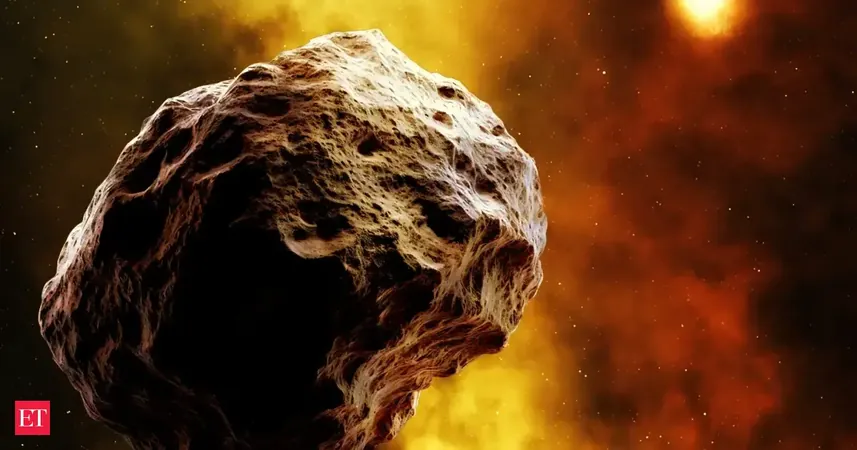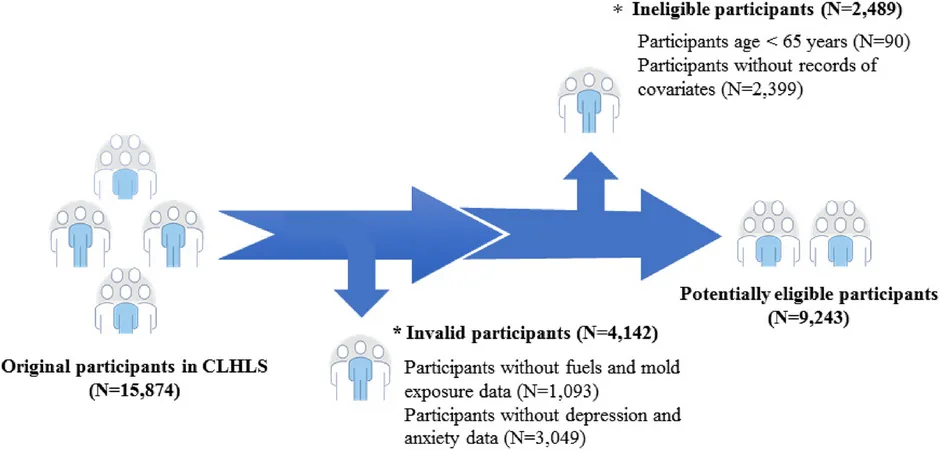
Asteroid 2024 YR4: Why Scientists are Keeping a Close Eye on a Potential Moon Impact
2025-07-14
Author: John Tan
Asteroid 2024 YR4: A Minor Threat with Major Implications
Asteroid 2024 YR4, once deemed a minor threat to Earth, has shifted focus as scientists closely monitor its path towards a potential impact with the Moon in 2032. Although Earth remains safe, a collision could unleash energy comparable to 6 million tons of TNT, creating a massive crater and potentially hazardous debris in orbit.
No Danger to Earth, but the Moon is Under Watch
Once flagged with a 1 in 43 chance of hitting Earth, recent telescope observations have ruled out any risk to our planet. Now, astronomers’ attention has turned to the Moon, which may be in the asteroid's trajectory during a close approach.
Paul Wiegert, an astronomer from the University of Western Ontario, explained, “An impact on the Moon would pose no risk to anything on Earth. However, it could jeopardize lunar equipment and astronauts, along with satellites orbiting Earth.”
What Would a Lunar Impact Look Like?
If asteroid 2024 YR4 were to collide with the Moon, it could result in a 1-kilometer-wide crater, marking the largest lunar impact in nearly 5,000 years. Though most debris would fall back to the Moon, a small fraction—about 0.02% to 0.2%—could escape into space, raising concerns for Earth's orbiting satellites.
Debris Dangers for Satellites
The danger to Earth may be negligible, but the prospect of lunar debris remains concerning. Wiegert highlighted that this debris could produce a surge of meteoroids, 10 to 1,000 times higher than normal for several days, potentially damaging satellites and other space assets.
These fragments would travel at staggering speeds of 22,400 miles per hour. While they are slower than typical meteors, they can still wreak havoc on satellites, especially since some debris could linger in Earth’s orbit for years.
Is Earth Entirely Safe from Debris?
The short answer is yes, thanks to Earth's atmosphere. Wiegert reassured that debris would burn up upon re-entry, with few pieces expected to make it through intact. Only objects larger than a meter could pose a risk of damage on Earth.
Monitoring the Situation: A New Threat Scale?
While discussions about creating a new threat scale have emerged, experts argue it may not be necessary as the consequences can vary widely. Richard P. Binzel, a planetary scientist at MIT, stated that existing monitoring methods suffice for mitigating risks.
What’s Next? Waiting for 2028
For now, astronomers are set to wait until 2028 for a clearer picture, when asteroid 2024 YR4 will be visible again. They anticipate updating the impact probabilities then, with the current risk of hitting the Moon estimated at 4%.
Wiegert noted, “It will be a thrilling event to observe, perfect for binoculars or small telescopes.” The ongoing research is being shared with the American Astronomical Society, keeping the scientific community engaged in this captivating cosmic scenario.




 Brasil (PT)
Brasil (PT)
 Canada (EN)
Canada (EN)
 Chile (ES)
Chile (ES)
 Česko (CS)
Česko (CS)
 대한민국 (KO)
대한민국 (KO)
 España (ES)
España (ES)
 France (FR)
France (FR)
 Hong Kong (EN)
Hong Kong (EN)
 Italia (IT)
Italia (IT)
 日本 (JA)
日本 (JA)
 Magyarország (HU)
Magyarország (HU)
 Norge (NO)
Norge (NO)
 Polska (PL)
Polska (PL)
 Schweiz (DE)
Schweiz (DE)
 Singapore (EN)
Singapore (EN)
 Sverige (SV)
Sverige (SV)
 Suomi (FI)
Suomi (FI)
 Türkiye (TR)
Türkiye (TR)
 الإمارات العربية المتحدة (AR)
الإمارات العربية المتحدة (AR)